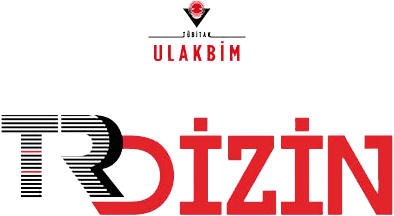
Bu eser Creative Commons Alıntı-GayriTicari-Türetilemez 4.0 Uluslararası Lisansı ile lisanslanmıştır.













Detection of Campylobacter jejuni Contamination in Poultry Houses and Slaughterhouses
Ahmet KolumanTarım Bakanlığı, Ulusal Gıda Referans Laboratuvarı, Mikrobiyoloji Laboratuvarı, AnkaraOBJECTIVE: This study was designed to determine the presence of thermophilic Campylobacter spp. using the conventional cultural technique from neck skin, intestinal contents of slaughtered chickens, and water, feed samples of same flock taken at the farm level. C. jejuni strains obtained using conventional cultural techniques were confirmed using the PCR technique.
METHODS: 384 samples consisting of 160 chicken neck skin, 160 intestinal content, 32 feed, and 32 water samples were obtained from two different slaughterhouses in hot (May, June, July, August) and cold months (November, December, January, February). The enrichment based ISO (The International Organization for Standardization, 10272) method was used for the isolation and identification of thermophilic Campylobacter spp. in all samples. Strains were verified by ceuE gene.
RESULTS: 248 (64.58%) of the 384 samples were found to be contaminated with thermophilic Campylobacter species. 138 (86.25%) of the 160 chicken neck skin, 106 (66.25%) of the intestinal content and 4 (12.5%) of the 32 water samples were contaminated with thermophilic Campylobacter species. Nothing was found in the analysis of feed. C. jejuni was the species of Campylobacter determined in 82 (51.25%) of the 138 neck skin samples, 122 (76.25%) of the 106 intestinal contents samples and three of the four sets of drinker samples. All the factors identified in the drinkers were isolated from bowl type ones and Campylobacter species could not be determined in none of the samples of nipple type watering system. C. jejuni was determined in 116 (% 60.42) of the samples in hot months and 91(% 47.40) in cold months of the 192 samples in total taken from each farm, 80 intestinal content, 80 neck, 16 water and 16 feed samples). Contamination rate for the samples taken in warmer months was 14.20% higher than in colder months and the difference was statistically significant (p = 0.0021). 171 (82.00%) of the 207 C. jejuni strains defined by classical culture methods were also confirmed with PCR technique. 1220 thermophilic Campylobacter strains isolated from 384 samples in total and they were identified in 649 as C. jejuni, 515 as C. coli and 56 as C. lari according to ISO methods.
CONCLUSION: It was determined that C.jejuni contamination of chicken flocks in slaughter houses occurs during the processing. ceuE gene is found to be a good primer for confirmation of the presence of thermophilic Campylobacter spp. in the strains. Data acquired from this study underlines that Campylobacter jejuni found in poultry meat is an important public health hazard.
Keywords: PCR, Chicken, Campylobacter
Piliç Kümesleri Ve Kesimhanelerinde Campylobacter Jejunı Kontaminasyonunun Belirlenmesi
Ahmet KolumanTarım Bakanlığı, Ulusal Gıda Referans Laboratuvarı, Mikrobiyoloji Laboratuvarı, AnkaraAMAÇ: Bu çalışmada, piliç kesimhanelerinde yeni kesilmiş piliç karkaslarından alınan piliç boyun derileri ve bağırsak içeriği ile piliçlerin kesimhaneye getirildiği kümeslerden alınan yem ve su örneklerinde termofilik Campylobacter türlerini kültür tekniği ile belirlenmesi ve Campylobacter jejuni olarak saptanan suşların PCR tekniği ile doğrulanması amaçlanmıştır.
YÖNTEMLER: İki farklı piliç kesimhanesinden sıcak (Mayıs, Haziran, Temmuz, Ağustos) ve soğuk aylarda (Kasım, Aralık, Ocak, Şubat) 160 adet piliç boyun derisi, 160 adet bağırsak içeriği ile 32’şer adet yem ve su örneği olmak üzere toplam 384 örnek alınmıştır. Alınan tüm örneklerde, termofilik Campylobacter türlerinin izolasyon ve identifikasyonunda zenginleştirme işlemine dayalı ISO (The International Organization for Standardization, 10272) yöntemi kullanılmıştır. Suşlar ceuE geni ile doğrulanmıştır.
BULGULAR: Toplam 384 örneğin 248 (% 64.58)’inin termofilik Campylobacter türleri ile kontamine olduğu saptanmıştır. 160 boyun derisi örneğinin 138 (% 86.25)’i, 160 bağırsak içeriği örneğinin 106 (% 66.25)’sı ve 32 su örneğinin dördünde (% 12.5) termofilik Campylobacter türleri saptanmıştır. Yemlerden yapılan analizlerde ise her hangi bir etken bulunamamıştır. Campylobacter türleri saptanan 138 boyun derisi örneğinden 82 (% 51.25)’sinin, 106 bağırsak içeriği örneğinden 122 (% 76.25)’sinin ve dört kümes suluk örneğinden üçünün C. jejuni olduğu belirlenmiştir. Suluklardan saptanan tüm etkenler kase tipi olanlardan izole edilmiş olup damla tipi olanlardan alınan örneklerin hiçbirinde Campylobacter türü belirlenememiştir. Her iki işletmeden alınan 80’er boyun ve bağırsak içeriği ile 16’şar su ve yem örneği olmak üzere toplam 192’şer örneğin sıcak aylarda 116 (% 60.42)’sında soğuk aylarda ise 91 (% 47.40)’inde C. jejuni saptanmıştır. Sıcak aylarda alınan örneklerdeki kontaminasyon oranı soğuk aylara oranla % 14.20 daha yüksek bulunmuş ve aradaki farkın istatistiksel olarak önemli olduğu (p=0.0021) belirlenmiştir. Klasik kültür yöntemleriyle tanımlanan 207 C. jejuni suşu, 171 (% 82.00)’i PCR tekniği ile de doğrulanmıştır. Toplam 384 örnekten 1220 adet termofilik Campylobacter suşu izole edilmiş ve bunların ISO yöntemine göre yapılan tanımlama testleri sonucunda 649’unun C. jejuni, 515’inin C. coli, 56’sının C. lari olduğu saptanmıştır.
SONUÇ: Piliç kümeslerinden kesimhaneye getirilen piliçlerin, kesim işlemine bağlı olarak C. jejuni ile kontamine olduğu ve izolasyon ve tanımlamada ceuE ile yapılan doğrulamanın uygun olduğu düşünülmektedir. Elde edilen verilerin ışığında Campylobacter jejuni’nin kanatlı etlerinde bulunduğu ve bunun halk sağlığı yönünden önem gösterdiği düşünülmektedir
Anahtar Kelimeler: PCR, Piliç, Campylobacter
Manuscript Language: Turkish
(2983 downloaded)


